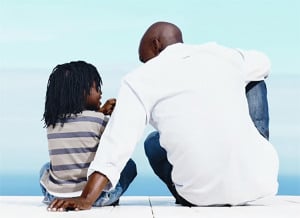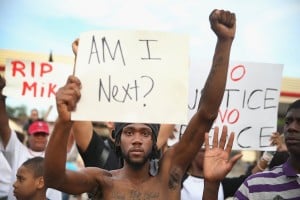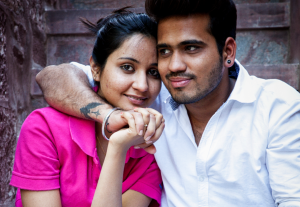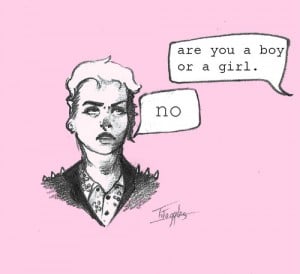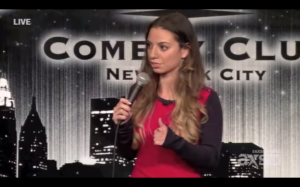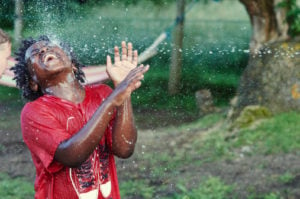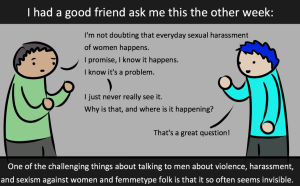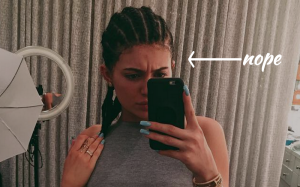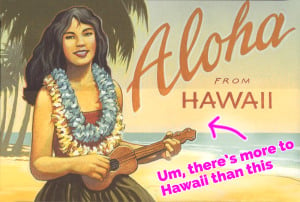
Person sitting at desk using computer.
This article was originally published on Wear Your Voice and republished here with the author’s permission.
The other day as I was riding the subway, I saw an advertisement for a new television series centering on Natalee Holloway, the 18-year-old who disappeared when she was on a high school graduation to Aruba in May 2005. The case is being revisited in a new television series on Oxygen, called “The Disappearance of Natalee Holloway”, where promises of new leads give audiences a new interest in the case.
American audiences are too familiar with Natalee Holloway’s name, just as they are with JonBenet Ramsey and other white girls and women whose faces are helmed as the epitome of innocence. This doesn’t dispute that they don’t deserve any of the harm that may have befallen them – no woman does. However, the ways that white victims of misogyny and gender-based violence are treated in comparison to BIW+oC — Black, Indigenous, and other women of color — are staggering and send a clear message on whose lives matter more.
Too often, the treatment of BIW+oC in the face of violence and misogyny is disregarded and pushed aside altogether.
Violence against BIW+oC is not only routine and expected, but celebrated. It’s clear that talking about misogyny isn’t something new, but the ways in which it impacts our lives are.
The danger with oppression isn’t with the everyday violence which it allows; the true danger comes from the normalization of that violence. As we’ve seen with the news surrounding The Breakfast Club and their complacency in transphobia and transmisogyny under the guise of “humor”, it is a dangerous thing when we become comfortable with the violence that surrounds us every day.
Our society is more complacent with violence against women and femmes than we give it credit for.
What does all of this have to do with misogyny?
Merged with the racism and oppression that particularly weighs on Black, Indigenous, and other women and femmes of color, misogyny becomes something much deadlier. Misogyny becomes a nameless epidemic that seeks to kill us silently and softly.
In the cycle of violence, dehumanization is the first step towards completing that cycle. Dehumanization includes “equating a specific group with subhuman creatures, allowing the dominant group to overcome their aversion to murder.”
Hate propaganda is also part of this step in the process. Do these things sound familiar? They should. They are present in every major act of violence in history and are certainly present in each example of smaller-scale or early-stage violence against oppressed groups.
The cycle of violence is important because it plays a role in how violence against BIW+oC is depicted in media. In fact, misogyny becomes even more dangerous when it is focused on works in tandem with racism and other forms of oppression. We see it all the time – the slut-shaming, ableism, and oppression that is so routine in our lives that it’s expected
We see it all the time: the slut-shaming, ableism, and oppression — that is so routine in our lives that it’s expected — has evolved into something deadlier than what we could imagine from misogyny on its own.
When we heard of the various acts of violence against Black girls that singer R. Kelly has engaged in over the years, social media was quick to brush it off as a joke. Memes were quick to surface and the social media temperature turned to simply writing off the scandal as something that the women have brought upon themselves.
Similarly, the shaming of Usher’s sexual status and the news that he has exposed a former girlfriend to herpes without her consent also continues to further the stigma of women’s sexualities while also policing the ways that they express themselves.
All of these situations may seem disconnected, but they all reinforce how violence is used to maintain control over BIW+oC. Without it, misogyny and the sexist structures that are laced within our society can’t hold on their own.
Reversing these structures is a tall order, but not an impossible one.
We must hold those with privilege amongst us accountable in their compliance in this system. No one can truly be free while others are still oppressed, we must untangle how connected we are to misogyny and oppression.
We must have men and masculine-identified/presenting people standing up and using their stance in our society to have misogyny considered the cruel gatekeeping structure that it is.
Recent occurrences continue to send the message that the lives of BIW+oC aren’t valued. And though we know that this is not true, there is still much to be said for the fact that this harmful message is allowed to persist. For in its existence, we are subconsciously granting our permission for the cycle of violence to continue on its journey. That cannot happen.
It’s past time that we see misogyny for what it is and begin to take it seriously as a tool for serious harm against both BIW+oC and other women.
[do_widget id=’text-101′]
Cameron is a writer, emerging sex educator, and professional fangirl from New Jersey. Her work has been featured in Glamour, Harper’s Bazaar, ThinkProgress, and others. She’s also an avid fan of dying her hair obnoxious colors. Follow Cameron on Twitter @BlkGirlManifest.
Search our 3000+ articles!
Read our articles about:
Our online racial justice training
Used by hundreds of universities, non-profits, and businesses.
Click to learn more





